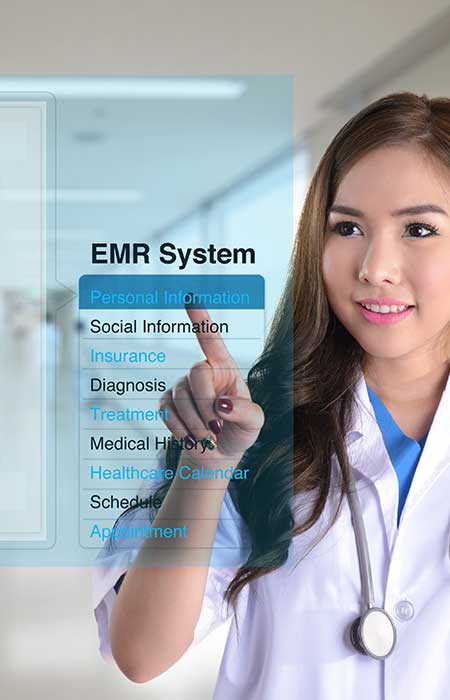Alternative Payment Model – Why Healthcare Organizations Should Dive Into It Today!
The cost of healthcare in the US represents over 18% of GDP, with an estimated third ($1 trillion a year) being wasted. This pattern will continue to worsen partly due to an aging population and the rising cost of novel therapies. These mounting challenges translate into market dynamics that put pressure on the entire ecosystem of providers, payers, and life science companies to improve outcomes and patient experiences while reducing costs.
To overcome such mounting challenges, consumers and governments are seeking a better way to pay for healthcare, one that rewards providers for delivering superior value to patients: that is, for achieving better health outcomes at a lower cost.
The Alternative Payment Model is a move in that direction that brings together technological advancements, patient needs, and regulatory changes. The Centers for Medicare and Medicaid Services (CMS) is leading its charge in the United States.
Figure 1 Components Driving Need for APM in Healthcare
What is an Alternative Payment Model?
It is a payment system that gives added incentive payments to provide high-quality and cost-efficient care.
| Current Model – Fee for Service | Future model – Alternative Payment Model |
|---|---|
| A quantity-based system in which fees are paid for every service provided | A quality-based system in which fees are paid based on the outcome of the treatment |
| Provider centric – providers are incentivized for a higher number of patient visits, procedures, tests, treatment, etc., which may not be aligned to patient health and wellness | Patient-centric – providers are incentivized to provide appropriate care and treatment designed to promote health and wellness rather than excessive treatment and profit. It focuses on the prevention & early detection of disease |
| Not done on regularly. Also, there are no defined metrics | Reimbursements are usually linked to meeting performance criteria |
Alternative payment models can apply to a clinical condition, a care episode, or a patient population type. The structure and rules of an APM define which healthcare organizations are eligible to participate.
The Medicare Access and CHIP Authorization Act (MACRA) is in the process of defining the alternate payment model based on the following principles:
- Payments to be provided based on quality and outcomes rather than volume
- Major incentive programs like value-based payment modifier, PQRS, meaningful use, and the Medicare EHR incentive program to be consolidated into one single comprehensive framework. Though the existing incentive programs will be retired, the Merit-Based Payment System (MBPS) will retain the current quality reporting programs’ foundational ideas
- Advanced health information technology to be leveraged for the effective roll-out of the model
CMS Innovation Center Model (Under section 1115a) – New payment and service delivery models are designed by the CMS Innovation Center per the requirements of section 1115A of the Social Security Act. Additionally, several specific demonstrations have been defined by Congress – both through the Affordable Care Act and previous legislation – to be conducted by CMS.
The Medicare Shared Savings Program – aka Shared Savings Program offers providers and suppliers (e.g., physicians, hospitals, and others involved in health care) an opportunity to create an Accountable Care Organization (ACO) which consents to be held accountable for the quality, experience of care, and cost thereof, of an assigned Medicare Fee-for-Service beneficiary population. This program has different tracks that allow ACOs to opt for the best-suited arrangement for their organization.
The Medicare Shared Savings Program is an important innovation in the process of shifting CMS’ payment system away from volume and towards value and outcomes. It is an alternative model that:
- Promotes accountability for the care of a patient population
- Coordinates services for Medicare Fee-for-Service (FFS) beneficiaries
- Promotes investment in high-quality and efficient healthcare services
Health Care Quality demonstration program requires utilization of certified EHR technology to document and convey care (with a minimum of 50% of APM clinician utilization).
How do the various stakeholders interact in an APM?
Participants belong to an APM Entity, a legal entity voluntarily created by a group of providers, payers, and consumers. The interaction between the various stakeholders is defined by three key-value metrics – value-based contracting, value-based insurance, value-based care.
Value-based Contracting – Value-based contracts (sometimes referred to as risk-sharing agreements or outcomes-based contracts) are a type of innovative payment model that brings together two key stakeholders—health care payers and providers. The key terms being the direct co-relation between the service provided and outcomes delivered.
Value-based Insurance Design – Value-based insurance (Payment) is a relatively new approach to health insurance in which financial barriers, such as co-payments, are lowered for clinical services that are considered high value, while consumer cost-sharing may be increased for services considered to be of uncertain value.
Choosing High-Value Care – Incentives that encourage patients and providers to use preventative care rather than waiting for a more acute (and more expensive) incident. Payments are designed to incentivize providers and patients to keep patients healthy and out of high-cost care settings. Examples are payments for wellness care, no deductible for preventative visits, etc.
In essence, in an APM, all entities are bound by value-based KPIs, which in turn lead to high-quality care at lower costs.
How does technology help in achieving the target stage?
The major aims of APM are implementing an effective care continuum, enhancing patient experiences, standardizing outcome and cost of care, and enabling treatment delivery through a collaborative chain of activities. While many of the necessary systems and processes are already in place, they largely work in silos.
The first step in defining an APM is predominantly by using Healthcare Effectiveness Data and Information Set (HEDIS) measures in population-based models to use measures that better assess patient outcomes and reduce clinician burden. This is followed by engaging providers in an APM design (such as provider advisory councils), evaluating provider capabilities for population health management (for instance, via joint operating committees), and implementing strategies for effective data sharing, KPIs process improvements, and financial accountability.
Figure 2 Business process and technology triggers for APM design
To navigate the journey from fee-for-service to value-based healthcare, a well-oiled value-chain has to be created involving all stages of the care continuum. To this end, health information technology will play a crucial role in accelerating the process.
Figure 3 below provides a detailed view of the various applications to enable APM.
Figure 3 Key technologies and drivers of various applications to enable APM
What can be some of the KPIs?
Adoption of this new model would compel organizations to measure new key performance indicators. Although the definition of the ideal KPIs for this model is still evolving, here are some of the KPIs that healthcare providers may need to measure to ensure long-term financial success.
The following are some of the KPIs defined under each key parameter identified based on the principles of quality care, patient centricity, and outcome-based payment.
Quality Care KPI
- Clinical quality indicators, beyond the federally mandated CQMs, to improve the health of patients and improve the overall quality of care
Patient Centricity KPI
- Availability of EHR data (interoperability) that integrates clinical data across the care continuum
- Availability of clinical outcomes to each stakeholder in the healthcare provider in a dashboard format with data as near to real-time as feasible
- Measuring out-of-pocket expenses and reducing them through preventive health programs, remote patient monitoring, etc
Outcome-based KPI
- Measure the cost per patient of providing care for each patient population
- Percentage of compliance with evidence-based medicine to save costs and improve outcomes
Conclusion
Despite challenges, the healthcare industry has to move towards alternative payment methods. Properly designed APMs can consistently reduce medical costs for payers, improve outcomes for patients, and remain attractive for providers. The creation of APM requires multiple stakeholders (payer, provider, consumers) to come together to form a value-based, outcome-led model through information sharing, technology adoption, and benchmarking.
Innova Solutions can help your healthcare organization build a robust technology foundation for its value-based healthcare contracting strategy. Contact us to get the conversation started.






